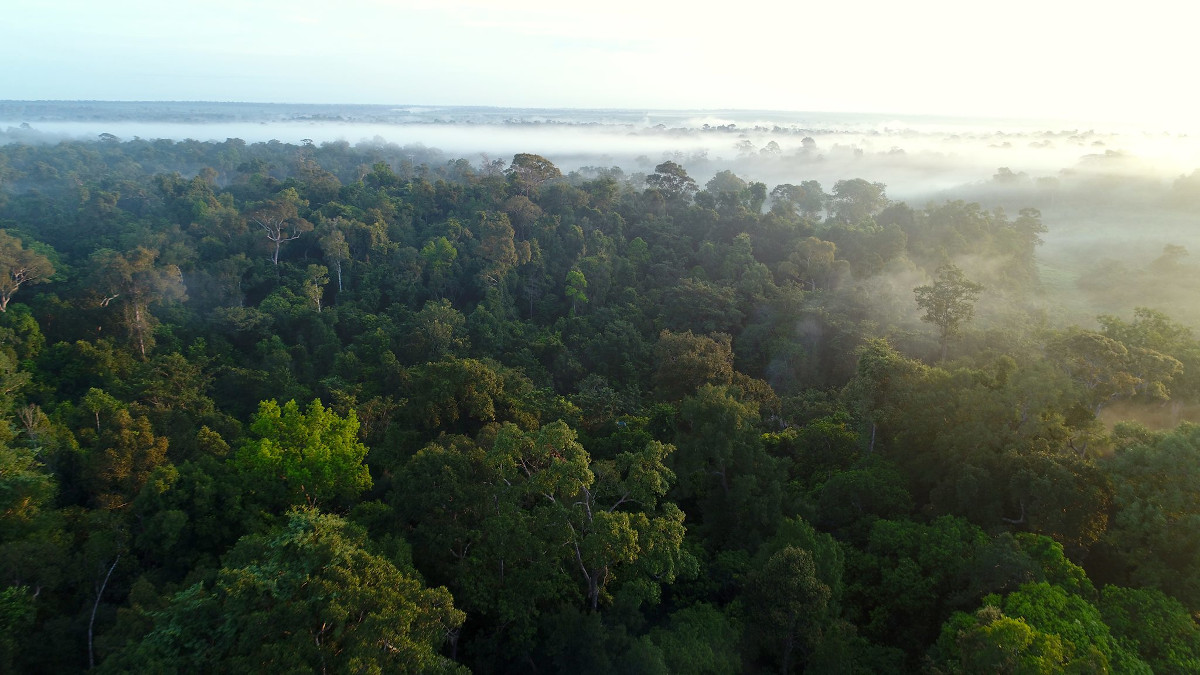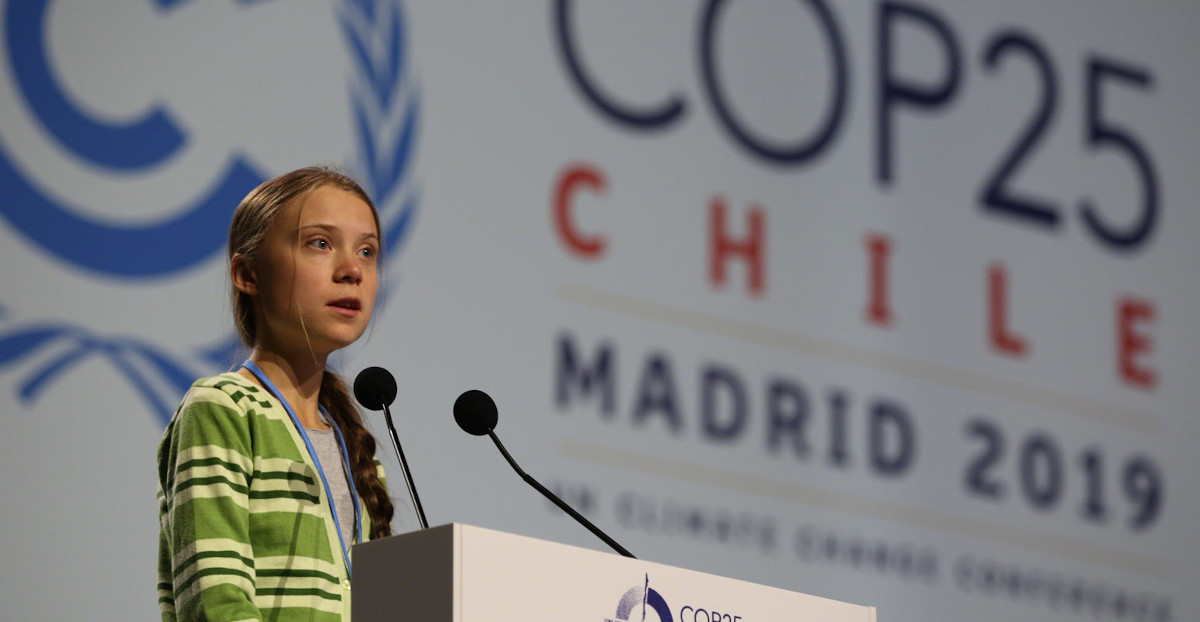 Five years after the promulgation of Pope Francis’ encyclical, Laudato si’: On Care for Our Common Home, we revisit the document in the midst of our present context. Today, there is a growing consensus, especially among scientists, that we are headed for difficult times. And yet, we and our leaders seem to be unsure of ourselves, unable to see clearly into a future that affects us all.
Five years after the promulgation of Pope Francis’ encyclical, Laudato si’: On Care for Our Common Home, we revisit the document in the midst of our present context. Today, there is a growing consensus, especially among scientists, that we are headed for difficult times. And yet, we and our leaders seem to be unsure of ourselves, unable to see clearly into a future that affects us all.
Short review
At this point, perhaps it would be helpful to quickly review the general themes of the encyclical. In the first chapter of Laudato si’, Pope Francis begins by talking about the situation of our common home. He touches on the issues of pollution, climate change, water, biodiversity, and the decline in the quality of human life. He proceeds to cite the rich scriptural foundations, mainly from the Judeo-Christian tradition, that clarify the place of God’s creation and our role in cultivating and protecting it. The third chapter points out the roots of the ecological crisis, how technology has given us so much power but without the wisdom necessary to wield it, and how our anthropocentric way of living has led to a “practical relativism” where we presume we have the authority to determine the value of God’s creatures based solely on its usefulness to us. Pope Francis proceeds to speak about an “integral ecology”, where society, economics, culture, and the environment are not seen as separate entities but interrelated in the most intimate of ways, saying that we do not deal with distinct crises, one social and the other environmental, but “one complex crisis, which is both social and environmental” at the same time. The fifth and sixth chapters are calls to action, beginning with a need for dialogue in several fora—local, national, global—and between science and all faiths. And finally, that we all have a change of heart, an ecological conversion, us and our institutions, towards greater care and respect for God’s creation.
How is the Earth doing now?
If we try to make a broad and brief assessment today of the environmental issues that Pope Francis mentioned in 2015, it is unfortunate to note that our general situation has gotten worse rather than better. For example, although the encyclical did not cite any quantitative data on the different kinds of pollution that it mentions, we can safely say that overall pollution in the world has increased rather than decreased. Chemical use in industrial agriculture continues to rise; global production of plastic further increased from 320 million tonnes in 2015 to a projected 400 million tonnes in 2020; untreated industrial waste has led to greater amounts of human ingestion of mercury and lead, etc. We even have increasing amounts of microplastics now falling with the rain and blowing with the wind, whose impacts on human health are still unknown.
As regards greenhouse gases and climate change, carbon dioxide (CO2) emissions have continued to rise, from 35.46 gigatonnes (Gt) in 2015 to 36.81Gt by the end of 2019, with every year being higher than the year before. Unsurprisingly, CO2 concentrations in the atmosphere rose from 403.96 parts per million (ppm) in May 2015 to 416.41 ppm in early May 2020. These numbers are very significant because scientists say that the last time this much CO2 was present in the atmosphere was during the Pliocene epoch, some 5.3 to 2.6 million years ago. During that time, sea levels were 20 metres higher than now, global temperatures were 3° to 4°C warmer, allowing a forest of beech and conifer trees to flourish in the south pole. The situation is so serious that 11,000 scientists from 153 countries signed on to a paper published in November 2019 entitled, World Scientists’ Warning of a Climate Emergency, which again warned us of “untold suffering due to the climate crisis”.
The other issues which Pope Francis referred to, such as water and biodiversity, are also not doing so well. We hear about the decline of birds and insects in many parts of the world, the accelerated disappearance of many other species, prompting some scientists to declare that we are responsible for triggering now the sixth mass extinction event the Earth has known, the last one being some 66 million years ago, during the time of the dinosaurs, when 75 per cent of all species were wiped out.

What is the main driver of all of this?
Each one of these issues—pollution, climate change, water, biodiversity—is already complex and very serious in themselves. But is there any other factor that we should be looking at?
In 1972, Dr Dennis Meadows and his team published a book called, The Limits to Growth. The goal of their project was to put together global historical trends beginning in 1900 of population growth, industrial output, consumption of non-renewable natural resources, agricultural production, and levels of pollution, and plot them into a dynamic world-model and let it run to show possible global scenarios until 2100. Among several findings, there were two that I found most interesting and disturbing. First, they stated simply that infinite growth in a finite space is what we are doing which, by the laws of physics, is certain to come to an end at some point. More specifically, it is the exponential growth of human population and industrial output within an Earth of finite resources that is causing all the other problems. Pollution, climate change, biodiversity loss, etc, although already huge issues to tackle, are really a form of push-back by the Earth. They are symptoms rather than the root cause of what is going on. Meaning to say, even if we somehow were able to magically solve them today, surely other issues would surface to take their place.
Second, after tweaking inputs to the world-model such as finding new oil reserves, solutions brought by new technologies, improved birth control methods, etc, the results always pointed to overshoot and collapse before the year 2100. Positive inputs merely delayed the resulting scenario by a number of decades, but never really changed the final outcome.
Why is it so hard to see?
If the projections by the world-model above are credible and even possible, that our present course of exponential growth is leading us to a situation of overshoot and collapse, so much so that the survival of our species is placed under question, then why aren’t our governments or global leaders taking aggressive action to steer us away from this forecastable future? Also, why is our perception of what may come so vague and amorphous?
Here, I offer three factors that contribute to the difficulty of giving the attention and focus that the different environmental crises and this impending future rightfully deserve. First, these issues are usually too far away from us in terms of space and time. Most of our worries are concentrated in our immediate surroundings and in the very near future. We are concerned about what happens to us and those close to us, tomorrow, next week, or even next year. Politicians and most leaders have plans for their constituents for the next four or six years. Rarely do people think or worry about the global situation in the next 100 years.
Second, global ecosystem functions do not operate in human time scales of hours, days, and a few years. There is a profound delay between cause and effect, lasting decades or hundreds of years, making us unable to make important decisions and sacrifices today for a future we will not live long enough to see. For example, even if we stabilise global populations today, its effects on the world will only be felt in 60 to 90 years from now.
Third, we have an alienation from nature that we need to overcome. One of the several reasons for this alienation is our present economic philosophy. Neoclassical economics, and neoliberalism later on, have forced us to objectify nature and regard it mostly in terms of its financial value. This tends us towards an anthropocentrism that Pope Francis warned us about in Laudato si’, disregarding creation’s intrinsic value, and falsely claiming that only what is useful to us is valuable.
We need courageous leaders now
If we determine that the prospect of humanity’s overshoot and collapse is a serious possibility, then it is the moral responsibility for us who live in this generation to make the difficult decisions, and to devote our energies and resources to prepare for the future, so that the poor of this world and the coming generations may be better prepared. Our national and global leaders should look towards long-term strategies that benefit humanity and creation as a whole rather than short-term gains for themselves. One of our agenda then should be to build strong communities and resilient nations, if indeed our love for God’s people is real and everlasting.
The call of Pope Francis for solidarity and ecological conversion becomes more relevant now than ever. Let us join and support our leaders in extending our understanding of the world’s future, and reanimate our care for our common home!
 Filipino Jesuit Fr Gabriel Lamug-Nañawa is the Country Coordinator of Jesuit Service Cambodia and the incoming Reconciliation with Creation Coordinator of the Jesuit Conference of Asia Pacific.
Filipino Jesuit Fr Gabriel Lamug-Nañawa is the Country Coordinator of Jesuit Service Cambodia and the incoming Reconciliation with Creation Coordinator of the Jesuit Conference of Asia Pacific.

